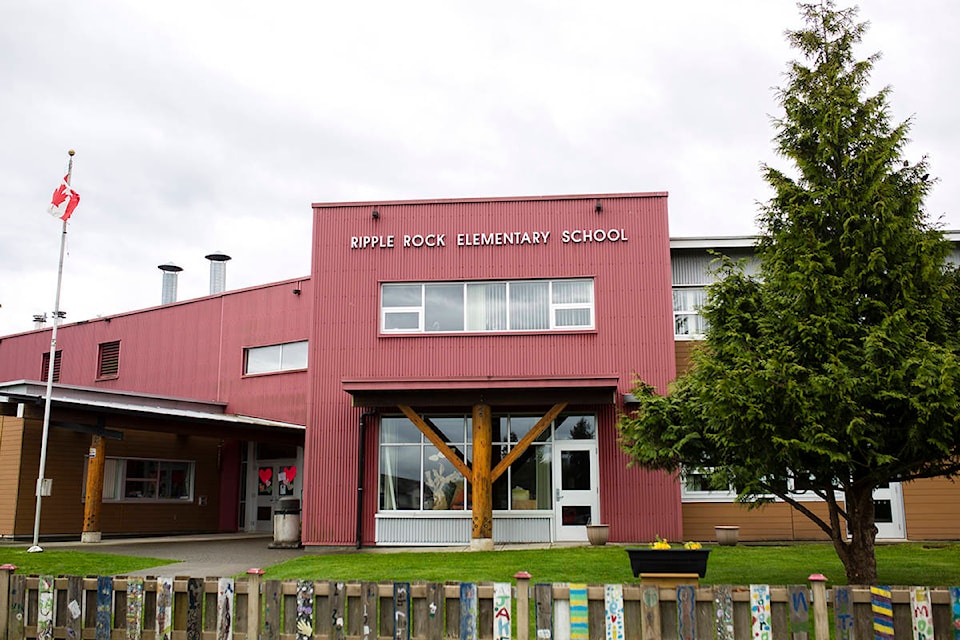Campbell River students in the public school district will have three learning options this fall.
As part of the Stage 2 restart, families can choose from full-time in-class learning, a hybrid model that involves digital learning and optional in-person support or homeschooling, the district announced during a virtual school board meeting last week.
During the townhall-style meeting, school board trustees and district staff presented the plan to return to full-time, in-class instruction in Campbell River schools, which was approved by the Ministry of Education. Included in the plan is the option for hybrid learning. Parents can also opt to leave the public school system altogether by choosing homeschooling.
School Board Chairperson Richard Franklin said, at the end of the day, it will be up to parents and guardians to choose the best option for their families.
“Everyone has a unique family situation and the decision is yours to make,” said Franklin. “And whatever decision you make as a parent is the one that is right for you and your family.”
Staff went over the many facets of the district’s plan for in-class instruction including access to school buildings, health checks, mask-use, cleaning protocols and hygiene expectations.
Students who choose in-class instruction will have an orientation session on either Sept. 10 or 11 before classes begin Sept. 14. During the sessions, students will be introduced to buildings that look different than they did when students left them ahead of the March break.
Staff conducted site visits to see where physical distancing signs need to be placed as well as floor markings and sneeze guards for office staff.
“We went site from site, starting from the front door. What’s it going to look like at the beginning of the day? Where do we need to have markings on the floor?” said Associate Superintendent Phil Cizmic. “What markings do we need on the wall? When people come into the office what’s the experience going to be like for the secretary?”
Students will be provided a reusable face mask during their orientation session. Staff members will receive personal protective equipment (PPE) including a face shield, reusable mask and hand sanitizer for their personal use. Schools will also have single-use masks for visitors and if a student forgets or loses their mask.
Masks won’t be required for students in elementary schools, however, if families opt for their children to wear a mask at school, the decision will be honoured.
“I think that we will see more masks than less and we will make sure regardless that that choice is a protected choice,” said Superintendent Jeremy Morrow, “and that we remove that stigma if there is any.”
In middle and secondary schools, students will be required to wear a mask in high-traffic areas like hallways and other common areas.
When the return to in-class instruction at Stage Two (of five) was announced at the end of July, the Ministry announced that cohort groups would be used. How the cohort groups would be organized was up to each school district.
In Campbell River elementary and middle schools, students will be paired with up to one other classroom in their cohort group, meaning that there will be a maximum of 60 people in the cohort. Cohorts won’t spend the bulk of class learning time together, but will have the same recess and lunch breaks.
Classrooms have sinks and five portables had sinks installed over the summer to allow for hand hygiene in classrooms rather than bathrooms. Teachers will be encouraged to leave outside windows and doors open to promote airflow when the weather allows. Students will be using outdoor access to their classrooms and will file their daily health check upon arrival as well as cleaning their hands.
In high schools across the province, learning groups will have up to 120 people.
However, the Campbell River district opted to move to a 1/8 course model, which means students will only be taking one class at a time over five-week periods to finish their full course load over the school year. This also means cohort groups at Carihi and Timberline will be no larger than 30 students.
Class sizes are capped by the ministry. Kindergarten classes can have up to 20 students, Grades 1 to 3 can have up to 22 students and Grades 4 to 12 can have up to 30 students.
In addition to in-class learning, families are also able to choose to have students take part in a hybrid program called eBlend (Kindergarten to Grade 9) or EBOS (Grades 10 to 12). Students do the bulk of their learning digitally and will have teacher support throughout. Face-to-face help is optional. In these programs, students remain connected with their schools, but families are asked to commit for one year as the district reassigns staffing based on demand for the different learning options.
The third option available to families is homeschooling, but this is outside the purview of the school district and those who move from the district to homeschooling won’t be guaranteed a place in their previous school for the following year.
A breakdown of the alternative options is available on the school district’s website.
